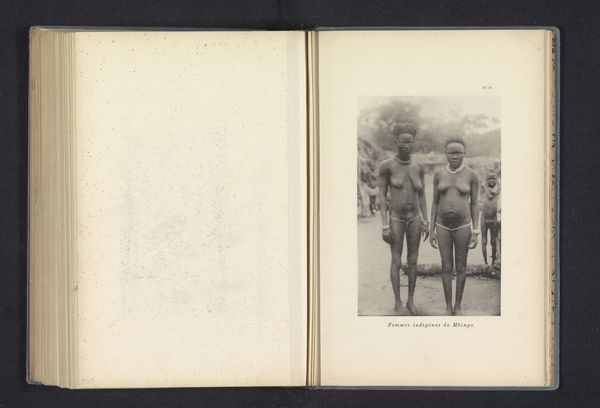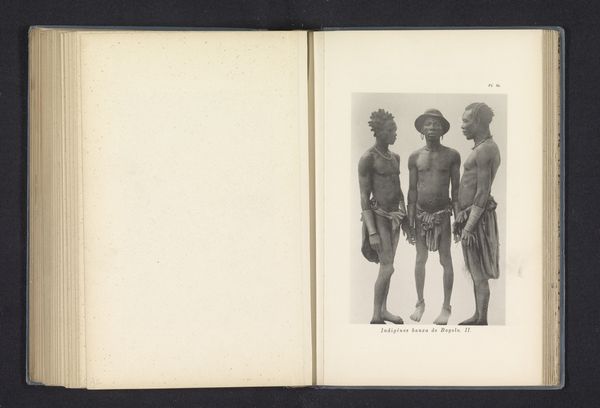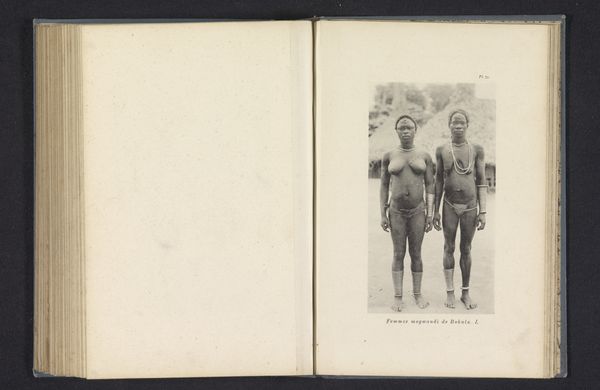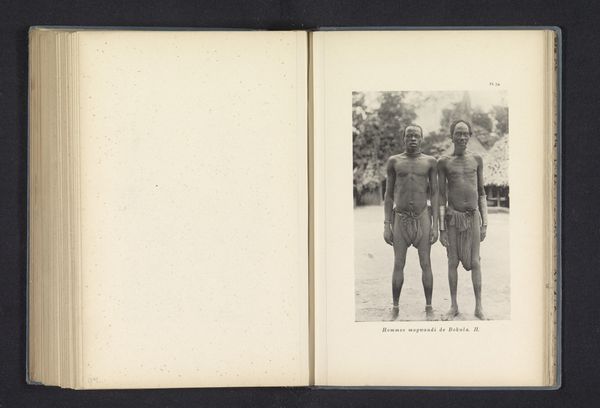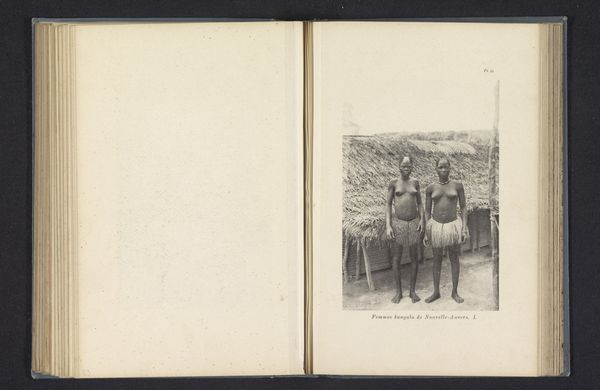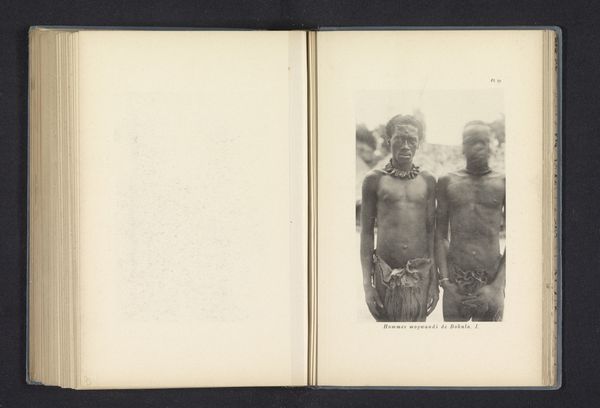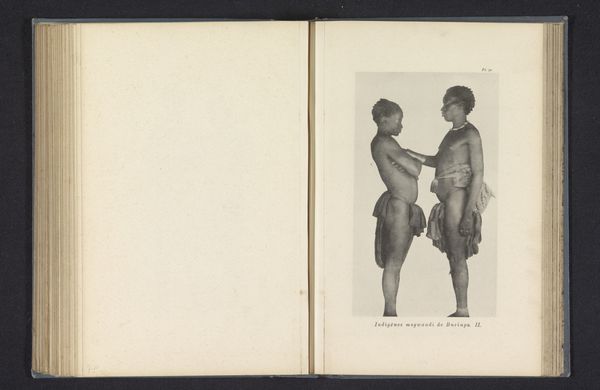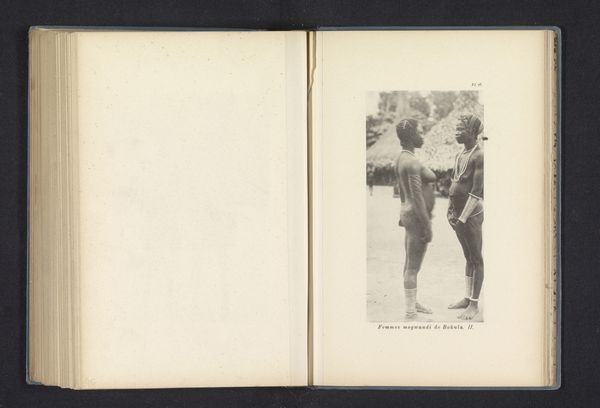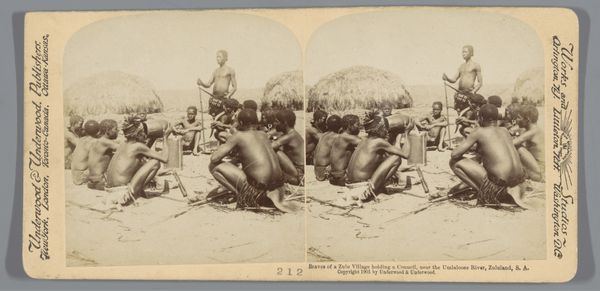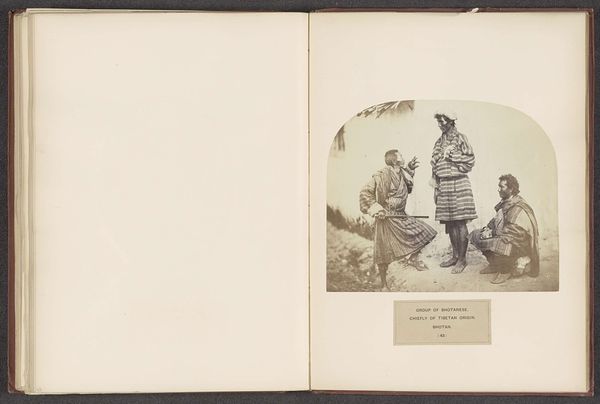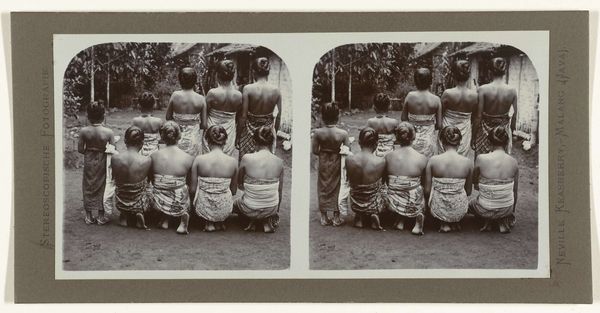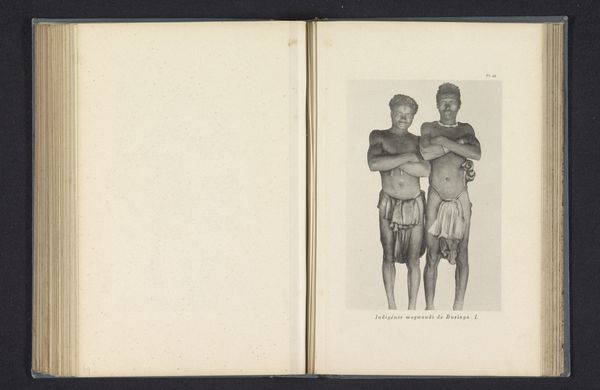
photography
#
portrait
#
photography
Dimensions: height 161 mm, width 116 mm
Copyright: Rijks Museum: Open Domain
Curator: This compelling image, taken in 1896 by Franz Thonner, is titled "Portret van drie mannen te Wangata." It's a photograph, a study in realism rendered in tones of gray. Editor: My first impression is one of somber formality, a stark portrayal within a dense, verdant background. The three figures command attention by way of direct engagement with the lens. Curator: Yes, there's a stillness, a posed quality typical of portraiture. I'm particularly drawn to the tonal variations within the photograph— the soft gradients against the textured foliage. This serves to enhance the overall sense of depth. Editor: These men from Wangata are undoubtedly posed, yet I wonder about the politics inherent in that act. Who asked them to pose? For what purpose was this image captured? Photography from this era often bears the weight of colonial power dynamics and these aspects shape our reading of the image. Curator: I agree, those tensions exist within the frame. But look closely at the composition: the interplay between the figures, their individual expressions, the way the light defines their musculature. I feel the attention to detail in their facial structures, each line contributes to a holistic representation of the human form. Editor: True, the formal aspects are certainly present. I can't divorce them from what this photograph represented in its own time, or continues to represent. Here, the three men exist for the gaze of the viewer and the camera has extracted them from their cultural environment in this depiction. Curator: It's precisely this tension between inherent beauty and loaded context that makes the photograph so powerful. The photographic image remains, doesn’t it? And yet our relationship to its cultural milieu also persists in tandem. Editor: Perhaps this points us toward the heart of it— the image as artifact and reflection. Both are crucial. Curator: A potent observation, indeed. The artwork stands as a window into our complex history. Editor: Yes, an enduring piece prompting essential dialogue.
Comments
No comments
Be the first to comment and join the conversation on the ultimate creative platform.
